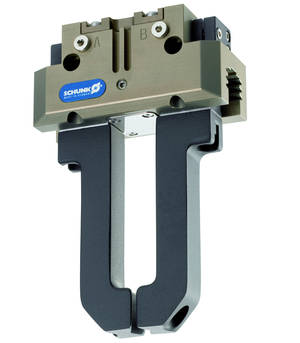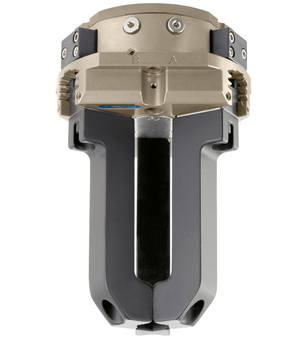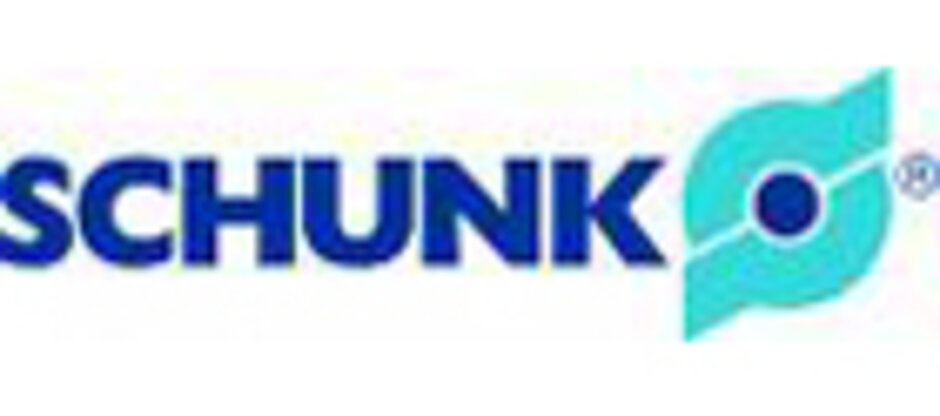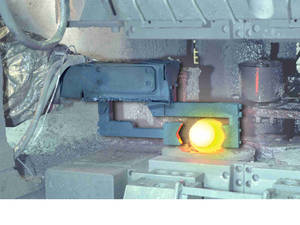also available in <link http: www.foundry-planet.com>![]()
With 87,000 employees and sales of around €14 billion in 2007, the foundry sector is one of German industry's smaller branches. Its economic significance is large, however, because hardly any other industry can function without cast parts of steel, aluminum or copper and copper alloys.
Germany is the largest casting manufacturer in Europe, and ranks number 6 in the world. The 265 German iron and steel foundries achieved a production volume of 4.8 million tons in 2007, while its 342 companies in the non-ferrous casting sector had a production level of 1.1 million tons. The vehicle and mechanical engineering sector is the principal customer for cast products. It has a 79% share of total casting production.
High degree of automation
In the past few years, many foundries have systematically expanded their added value chains and now provide the service of mechanically processing cast parts to their customers, for example. Driven by competitive pressure and exacting demands on quality and flexibility, many foundries rely on automation as much as possible: using robots in production is practically a matter of course.
Almost no other industrial sector places such exacting demands on the resistance of the automation components it uses. High temperatures, abrasive dust from sand cores and dies, steam, and hot, aggressive gases eat away at guides, clog seals, and have an adverse affect on lubricants.
Grippers are especially affected because they are on the front line and therefore exposed to the highest strain. They grip hot or still-glowing parts immediately after casting, are exposed to metal scrap, release agents, and core sand when dies are blown out, and have to withstand water and hot steam when pieces are cooling.
But there are also extreme conditions in the outlying areas of the foundry sector, where the temperatures are more moderate. Workpieces there are processed by chamfering, sawing or grinding for example, and the automation components used are also exposed to adverse conditions.
Exacting demands require special components
Schunk provides numerous components for companies in the foundry sector. With their rugged design, they are able to withstand the highest amount of strain and can also be prepared for especially tough conditions and high temperatures by taking advantage of numerous options.
Corrosion and dust protection
SCHUNK provides optional corrosion protection to increase the corrosion and abrasion resistance of a gripper or swivel unit, for example. Base jaw guides and the wedge and piston kinematics can be equipped with an extremely hard coating. This increases resistance to abrasive dust, reduces internal friction and the amount of lubrication required and extends the service life of the entire gripper.
To reduce the amount of dust that penetrates the gripper, many grippers have optional dust protection which shields the guides with an additional cover.
Applying sealing air also prevents penetration by particles from the environment. This is done by applying compressed air to the inside of the gripper through its sealing air connection. This causes a slight air current to emerge from the gap between the guides and the housing, which prevents most of the smallest particles from penetrating.
Series PGN plus grippers, used for high temperature applications, are also available in a special foundry design. With options such as an expanded protective enclosure and the use of a special lubricant, Schunk has made sure that the grippers have high thermal resistance. Because less ceramic materials are used in the base jaws, the thermal conductivity from the gripper fingers to the grippers is reduced. That means that the foundry design can also be applied to forging and casting processes whose workpieces have extremely high temperatures.
Handling red-hot cast-iron parts
In a foundry, the red-hot forged blanks received from a handling system are placed in a cooling tank. To protect the parallel gripper from the high temperature, it is equipped with stainless steel fingers to minimize thermal conductivity. Additional air cooling from the outside prevents the gripper unit from overheating.
To prevent dirt from penetrating into the gripper unit, a special sealing air connection has been integrated. With this equipment, the handling system provides highly reliable performance with a minimum of maintenance costs.
In its foundry in Hemer, Germany, fittings manufacturer Grohe uses preformed sand cores to manufacture brass blanks. The cores are produced using an injection molding process, which means that the finished products have pin marks and flash.
Grohe uses robotics to remove them. The robots receive the sand cores, check them for core fracture at a sensor barrier, and then guide them past a stationary carbide cutter that removes pin marks and flash.
|
2-finger long-stroke gripper PFH 30 in protective enclosure - Stainless steel finger |
Multi-tooth guide
The multi-tooth guide developed and patented by Schunk also plays an important role in the foundry sector because it contributes to increasing the load capacity of grippers.
The multi-tooth guide permits forces and torques to be distributed among several guide surfaces instead of only one as in the case of the classical T-slot.
That means that the guides have a higher load capacity and the "jamming effect" is reduced. It also introduces the option of using longer gripper fingers for the same gripper size without overloading the guides.
The base jaws are fit into the housing with an accuracy of 0.01 mm, which also minimizes guide play and wear. As a consequence, components that are equipped with a multi-tooth guide are characterized by especially high load capacity and service life – the best prerequisites for use in foundries. Schunk's product range contains many grippers that are equipped with a multi-tooth guide. They include the pneumatic parallel grippers in the PGN plus series and their 3-finger counterparts in the PZN plus series, the PGB series with its end-to-end center bore, the DPG plus sealed gripper, the servo electrical EZN 64 3-finger centric gripper and the PZV 4-finger centric gripper.
Direct from the field: Schunk foundry applications
Schunk components are used everywhere in the foundry sector. The following examples provide a brief overview of Schunk components' broad application spectrum.
 |  |
PGN plus gripper | PZN plus gripper |
To remove flash, the sand cores are pulled through a beaded curtain that removes all burrs with its metal chain. All of the robots are equipped with the Schunk PGN plus 80 gripper in the dust protection design. Because the cores are very fragile and have to be gripped with perfectly accurate molding jaws at the exact points specified, Grohe uses glass fiber gripper fingers from the Schunk range that are manufactured using a special laserforming process. The grippers are equipped with the quick-change jaw system so that suitable gripper fingers can be fitted within a few seconds when changing over to a different product.
Contact to <link _top>Schunk GmbH & Co. KG in our Suppliers Profile



